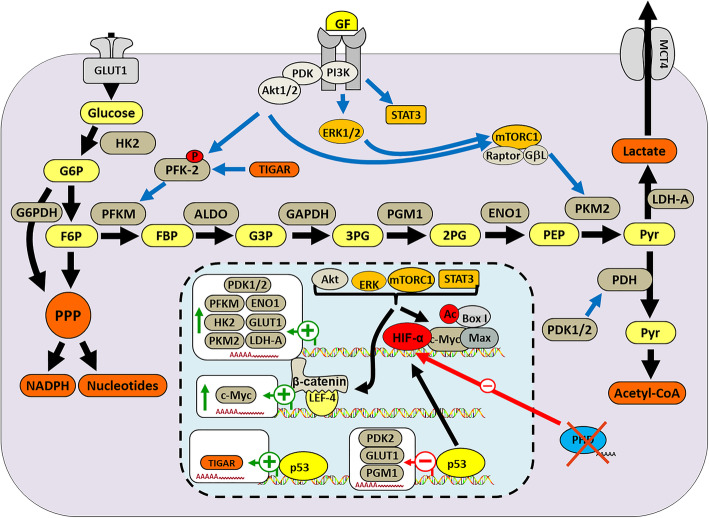Fig. 2.
Impacts of intracellular metabolites on HIF-α stability through epigenetic regulation. In hypoxic tumors, rapid proliferation requires lots of intracellular metabolites to build macromolecules, including nucleotides and proteins. Up-regulated glycolysis sustains the demands of tumor cells for intracellular metabolites. HIF target genes encoding special enzymes are activated to produce various enzymatic proteins, such as PDK1/2, enolase 1 (ENO1), hexokinase 2 (HK2) and so on, which leading to elevated intracellular metabolites, in turn, these metabolites including succinate, fumarate, pyruvate, lactate and oxaloacetate etc. and associated pathways involved enzymes such as PI3K, PKB, promote HIF proteins stability with PHD loss-of-function. More, p53, β-catenin and so on, could also affect HIFs stability. PFKM: phosphofructokinase, muscle; GLUT1: glucose transporter 1; PKM2: pyruvate kinase isozymes M2; LDHA: lactate dehydrogenase A; ERK: extracellular signal-regulated kinases; PGM1: phosphoglucomutase-1; G6PDH: glucose-6-phosphate dehydrogenase; Aldo: Aldosterone; MCT4: monocarboxylate transporter 4; F6P: fructose 6-phosphate; FBP: fructose-1,6-bisphosphate; G3P: glycerol-3-phosphate; 3PG: 3-phosphoglyceric acid; 2PG: 3-phosphoglyceric acid; PEP: phospho enol pyruvate

